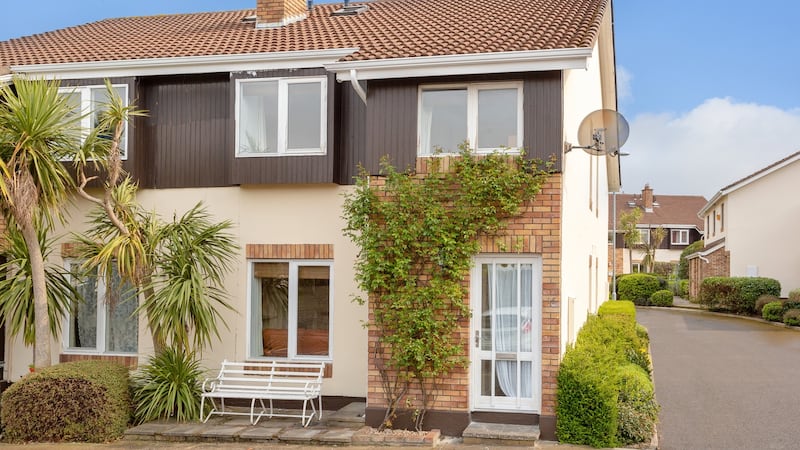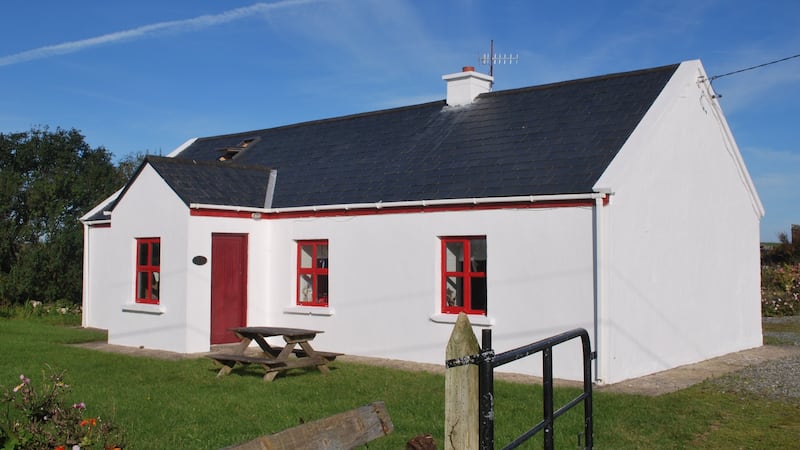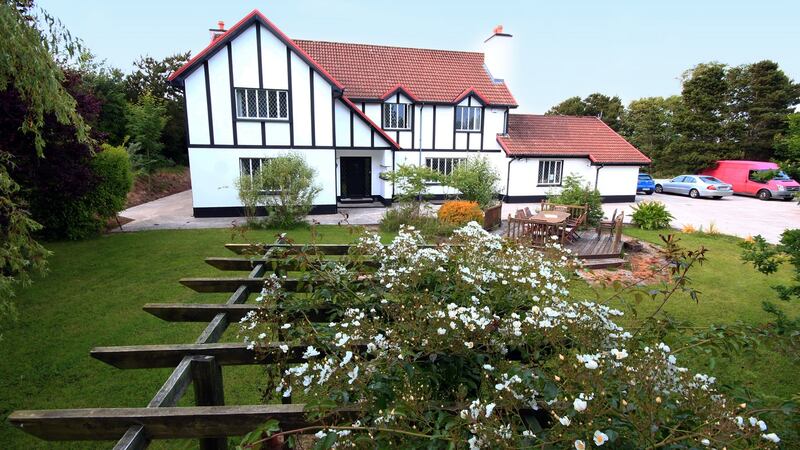Has the pandemic made you long for more space? A bigger, more affordable home; green fields; fewer people: there’s a lot to be said for quitting the city. With a global acceleration towards remote working, and cheaper housing, for some, living in the capital may no longer add up.
Crowded house
For weeks, Covid-19 restrictions had us tethered to within walking distance of our front doors. After yet one more circuit of the local housing estates or trying to social distance in busy parks, those paying top dollar to live in some of Dublin’s priciest suburbs may have questioned city life. Their country cousins west of the Shannon were confined too of course, but probably with smaller mortgages, fewer people to contend with and a lot more room to roam.
“The old norm of what is considered a ‘good location’ has been thrown up in the air a bit by all of this,” says Des O’Malley head of countrywide at Sherry FitzGerald. “From the first week of April, we have seen quite a bit more traction,” he says of new sales inquiries for homes in the west.
In the wake of a highly contagious pandemic, it won’t be surprising if the parameters of house hunting shift.
Coronavirus statistics tell a tale of two Irelands – densely populated Dublin, where over half of confirmed cases occurred, and the rest of the country. There are 3,677 people for every square kilometre in Dublin city and its suburbs, according to the last census. Having people highly connected and concentrated in the east of the country isn't good in a pandemic. It's not easy to share footpaths, parks and shops as you try to keep a two-metre distance from the other 3,677 people in your neighbourhood. This compares to an average of 27 people per square kilometre in rural Ireland. Population density probably wasn't on your house-hunting checklist before, but it might be now.
Traveller’s checks
In March, there was a near overnight shift to working from home for those in office jobs. This practice is set to continue, at least partly. Those in the greater Dublin area paying big money for housing in close proximity to their workplace may find it isn’t really necessary any more.
Facebook has said that its 48,000 employees, 4,000 of whom are in Dublin, will be able to switch to remote working from later this year. Twitter, which has its European headquarters in Dublin, has told staff they can work remotely 'forever'. And it's not just the tech giants. Last month, civil servants at the Department of Transport were told it was likely they would be working from home for the rest of the year.
CRO filings show that working for top tech companies located in Dublin pays handsomely – average salaries are €104,148 at Facebook, €113,957 at Google and €145,271 at Microsoft. But even on the big bucks, a home within reach of these employers that is detached for example, that has a garden or that has room to work from home may not be within budget. If you are not earning more than €150,000 a year, you can forget about buying the typical house in an area like Blackrock or Ranelagh. Dublin has the highest median house price in the country, at €370,000 according to CSO figures. Prices in Dún Laoghaire-Rathdown are the highest in Dublin at €525,000. Bring that big multinational salary west of the Shannon and it's a different story. You'll get a lot more house, outside space and access to nature for your money.
“Our office in Ballina sold four properties last week through virtual viewings, three were relocations from outside the region,” says O’Malley. “We would not have seen that profile 12 weeks ago.” The Mayo town, which calls itself the “Salmon Capital of Ireland,” is on the Wild Atlantic Way. A spacious four-bed home with a garage and on one acre in walking distance of the town will set you back €275,000. Some earners could be mortgage free in years instead of decades.
If you do migrate, you won’t be the first. West Mayo, in particular Westport and locations along Clew Bay have always been popular for those relocating, says Gerard O’Toole of estate agents Tuohy O’Toole. Consistently voted a great area to live, Westport and its environs are feted for Atlantic scenery, a thriving arts and culture scene, great restaurants and a strong sense of community. “I haven’t seen a recent trend as there have always been a relatively high number moving to Westport,” says O’Toole. “Dublin house prices and traffic are frequently mentioned as key drivers of a move.”
You can pay a lot less and a lot more, but the average house price in Westport is €204,000, according to CSO figures. After your monthly mortgage payment goes out, the long hours you probably work for that multinational salary means there will be far more left for you and your family than there was in Dublin. Prices in Westport are, in the West, second only to Galway says Tuohy. Average prices in that county are €286,600, according to the CSO.
Of course there are career opportunities in the west too. These include the pharma, biomed and life sciences cluster spawned by big employers Medtronic and Boston Scientific. An autonomous vehicle cluster is developing between Galway, Shannon and Limerick and a major production for Apple TV+ has been filming at Limerick's Troy Studios, the country's largest production studio facility.
Remote possibility
Working remotely only works if you can connect to the mothership. The ability to earn an income and collaborate with colleagues hinges on broadband. "It is among the first questions on viewings," says O'Toole. He says while all the main suppliers serve the Westport area, and local suppliers provide reach into more rural locations, service can still be patchy. Des O'Malley agrees broadband is an issue to the fore for buyers. "No more than you have the BER rating of a property, we'd love to include a broadband rating on our website – you put in your eircode and you can find out what your broadband is going to be." Work on the National Broadband Plan (NBP), the Government's long-standing plan to address the lack of broadband coverage in rural Ireland started this year. It will build a network to connect more than 540,000 rural homes and businesses to superfast broadband. The majority of homes should have access to the network and the choice of connecting to it within three years. House buyers can check connectivity by eircode on nbi.ie.
A remote working survey conducted by NUIG and the Western Development Commission (WDC) found that 87 per cent of respondents are now working remotely because of Covid 19. Amongst the top advantages respondents cited were no traffic and no commute.
“It’s not so much that you don’t like your desk or your colleagues, it’s the disjoint between where you live and where you work and how you get between the two. That is a key driver in the advantages of working from home,” says WDC policy analyst Deirdre Frost. Her organisation is a statutory body, in existence for two decades, tasked with promoting the economic and social development of the western region.
The single largest group in the survey did not want to work remotely every day. In fact only 12 per cent wanted to do so. Most, at 42 per cent, said they would like to work remotely several times a week.
For those wanting to mix living and remote working in the west with office life, good transport links to Dublin will be important. The hubs and enterprise spaces now dotted along the Wild Atlantic Way are another option. Workers could alternate home working with using one of the Digiclare hotdesks in Miltown Malbay, for example. For €10 a day, or €40 a week, individuals and small enterprises get high-speed broadband and printing facilities. Proximity to a lunchtime swim or surf at Spanish Point is a bonus. Ennistymon, Kilrush and Feakle also have hubs. The PorterShed in Galway city is another example, providing a co-working space for scaling tech companies. “The hubs all aim to have really good broadband which is particularly important in rural areas and before the National Broadband Plan rolls out,” says Frost.
Go west
For some employees, returning to the office after the crisis may not be an option. "Even with social distancing, we think that offices are going to be at about 25 per cent density," Facebook's Mark Zuckerberg has said. "So that just means we are going to have to have a lot of people who want to go back to the offices but aren't going to be able to do so." Lateral thinking by employers and employees will be required.
"Employers are increasingly looking at the possibility of renting space on behalf of a few employees," says Frost. She cites American company Pramerica which rents space for some of its employees at the gteic digital hub in Gweedore. "We would imagine that some big employers, who are now really looking at employment practices and at commercial rents, could instead consider renting space elsewhere."
Where employers and employees compete for the same resources in Dublin, it’s no wonder wages, commercial rents and housing costs spiral up. Well-paid people who cluster together bid up the price of the resources for which they compete. The pandemic and the acceleration in remote working it has ushered in may bring an armistice for those who choose to look west.
WHAT CAN YOU BUY IN THE WEST FOR €370,000?
The median price of a Dublin home could buy a Tudor-style house or a four-bed with separate artist’s studio. Compare these four.
Co Dublin

15 Rosemount Court, Booterstown
This two-bed end-of-terrace, in a low-density enclave off Booterstown Avenue, was on the market recently for €375,000 through Janet Carroll. It is close to the Dart station and shopping in Blackrock village.
Co Mayo

Hawthorn Cottage, Carrowbeg, Kilmeena, Westport
Website Sherry FitzGerald Crowley
Price €369,000
Four-bedroom home set on half an acre with mature gardens, fruit trees, walls of local stone. Comes with a detached artist's studio.
Co Galway

Tír Na nÓg, Lettershask, Ballyconneely
Website Matt O'Sullivan Auctioneers
Price €370,000
Two-bed detached cottage on the outskirts of popular village. Comes with second, adjacent thatched stone cottage. Lake and Atlantic views.
Co Clare

Lisdeen, Kilkee, Co Clare
Website OnlineEstateAgent.ie
Price €330,000
Six-bed, five-bath Tudor-style home with large, mature landscaped gardens. Just 2km from Kilkee beach.










